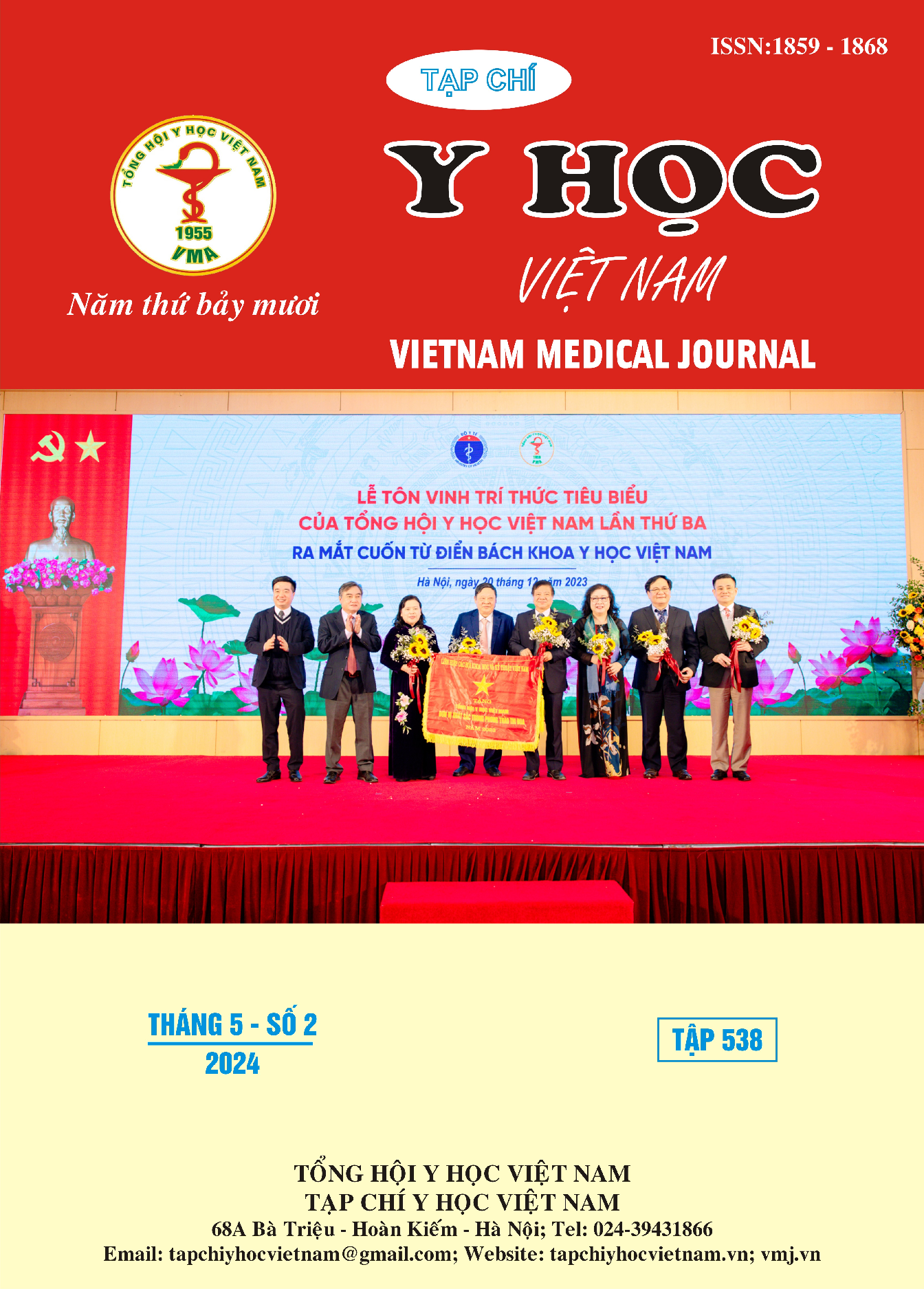RESEARCH ON THE EFFECTS OF TD0070 HARD CAPSULES ON CELL-MEDIATED AND HUMORAL IMMUNITY INDICES IN EXPERIMENTS
Main Article Content
Abstract
Research objective: Research on the effects of TD0070 hard capsules on cell-mediated and humoral immunity indices in white mice. Subjects and methods: Swiss white mice, purebred, both breeds, weighing 20±2 g. Research on the effects of TD0070 hard capsules on cell-mediated and humoral immune indices in white mice using intraperitoneal injection of cyclophosphamide causing immunodeficiency. Result: OA skin reaction: TD0070 oral doses of 1.728 g/kg and 3.456 g/kg: Skin reactions tend to increase compared to the model lot, but the difference is not statistically significant ( p > 0.05). Peripheral blood cytokine concentration: in the batch taking TD0070 at a dose of 1.728 g/kg, the concentrations of IL-2 and IFN-α in the peripheral blood increased significantly compared to the model batch with p < 0.05. TNF-α and IFN-γ concentrations tended to increase compared to the model batch, but the difference was not statistically significant (p > 0.05). At TD0070 oral dose of 3.456 g/kg: The concentration of cytokines in peripheral blood tends to increase compared to the model batch, however, the difference is not statistically significant (p > 0.05), except TNF-α increased significantly compared to the model batch with p < 0.01. IgG concentration in peripheral blood increased significantly compared to the model batch with p < 0.01 and p < 0.001, respectively. Conclusion: TD0070 dose of 1.728/kg (equivalent to the expected therapeutic dose in humans) taken continuously for 7 days has a clear immunostimulating effect on the model of acute immunodeficiency caused by cyclophosphamide through the Indicators: OA skin reaction, concentrations of IL-2, IFN-α, TNF-α, IFN-γ and IgG in peripheral blood. TD0070 dose of 3.456 g/kg tends to have better immunostimulatory effects in OA skin reaction, TNF-α concentration, IgG concentration in peripheral blood.
Article Details
Keywords
mmunity, TD0070.
References
2. Đỗ Tất Lợi (2015). Những cây thuốc và vị thuốc Việt Nam, Nhà xuất bản Y học.
3. Đỗ Trung Đàm (2006), Phương pháp ngoại suy liều có hiệu quả tương đương giữa người và động vật thí nghiệm. Phương pháp nghiên cứu tác dụng dược lý của thuốc từ dược thảo. Nhà xuất bản khoa học và kỹ thuật. Tạp chí dược học, số 479, tr. 38-41
4. Phạm Thủy Phương và cs (2014). Nghiên cứu tác dụng kích thích miễn dịch của Hồi xuân hoàn trên chuột nhắt trắng bị gây suy giảm miễn dịch bằng cyclophosphamid. Tạp Chí Dược học, số 461 tr.25-30.
5. Trần Thuý (2006). Chuyên đề nội khoa Y học cổ truyền, Trường Đại học Y Hà Nội, NXB Y học, tr 470-473
6. Nguyễn Nhược Kim (2017). Bệnh học nội khoa Y học cổ truyền, Trường Đại học Y Hà Nội, Nhà xuất bản Y học, tr 128-136
7. Shirani K, Hassani FV, Razavi-Azarkhiavi K, et al. (2015). Phytotrapy of cyclophosphamide-induced immunosuppression. Environ Toxicol Pharmacol. 39(3): 1262-1275
8. Gupta M. (2016) Levamisole: A multi-faceted drug in dermatology. Indian J Dermatol Venereol Leprol. 82(2): 230-236.
9. Cavalcanti YV, Brelaz MC, Neves JK, Ferraz JC, Pereira VR (2012). Role of TNF-alpha, IFN-gamma, and IL-10 in the development of pulmonary tuberculosis. Pulm Med.1-10
10. Shin S, Kwon J, Lee S, Kong H, Lee S, Lee CK, Cho K, Ha NJ, Kim K (2010). Immunostimulatory Effects of Cordyceps militaris on Macrophages through the Enhanced Production of Cytokines via the Activation of NF-kappaB. Immune Netw. 10(2):55-63


